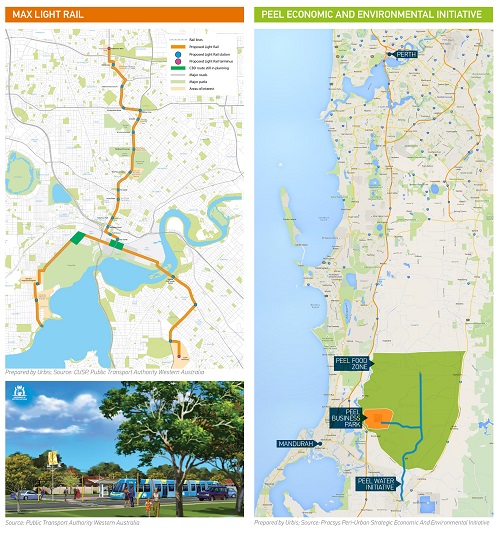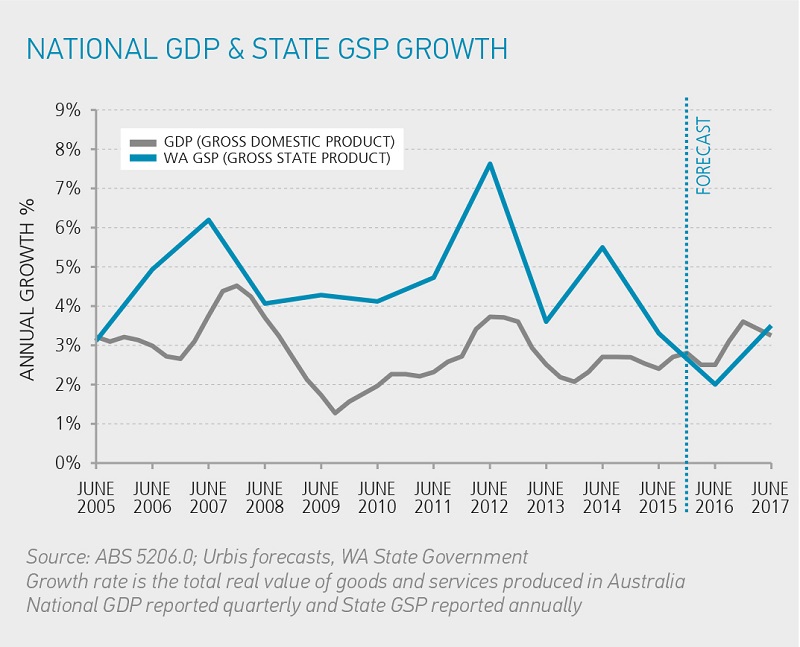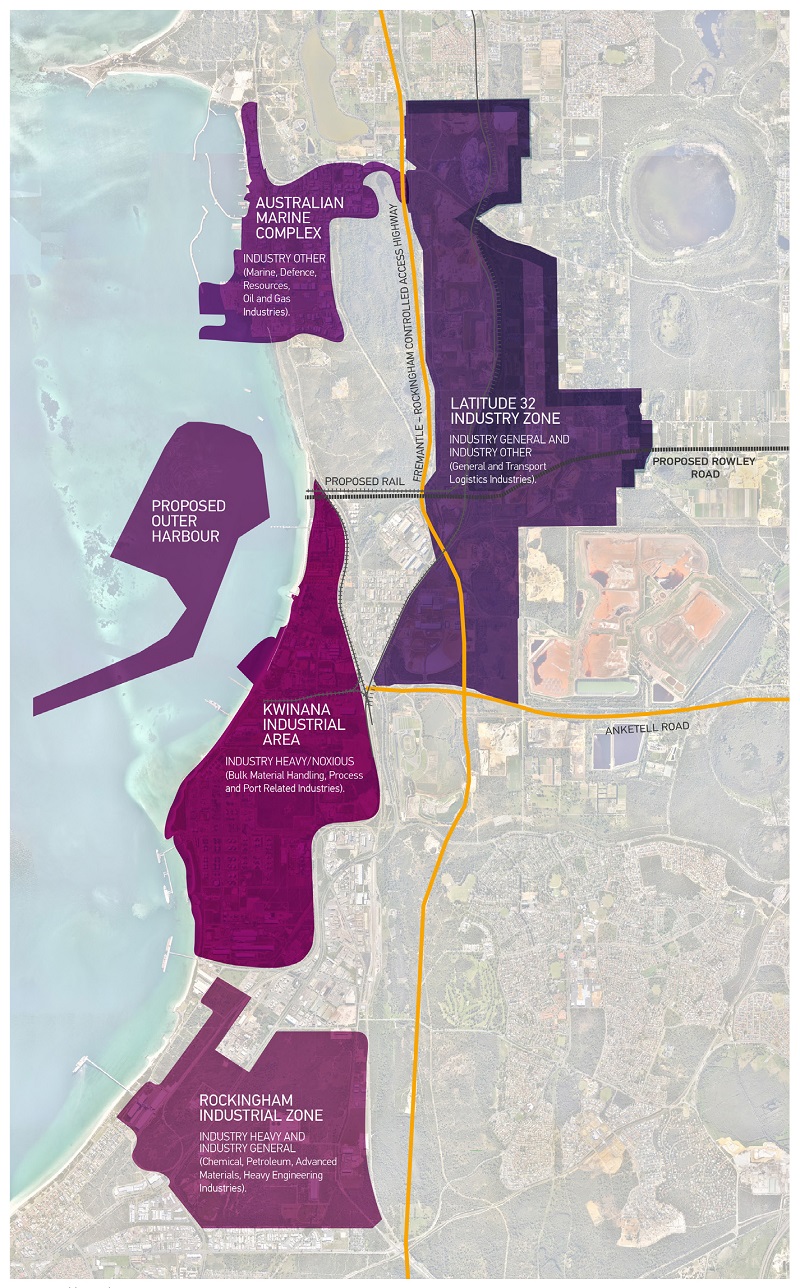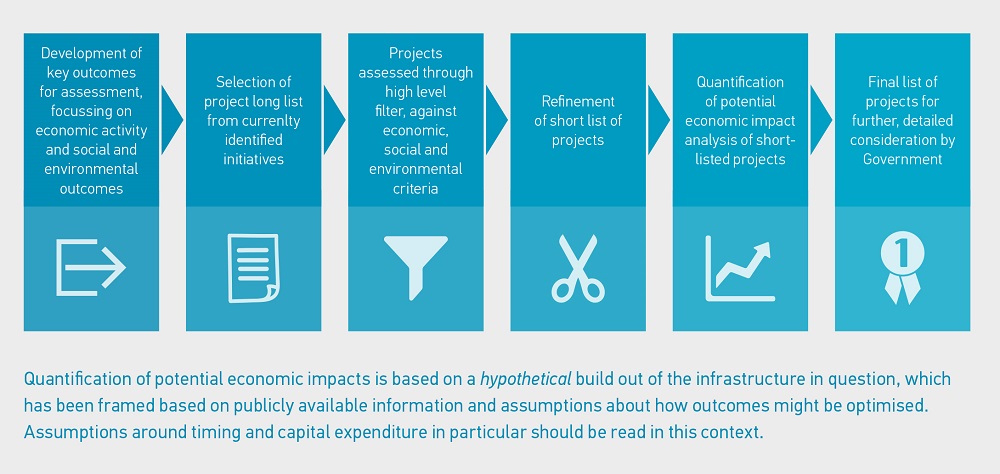Utilising the framework and assessment criteria, three major projects demonstrated strong credentials for further analysis. Publicly available information and a realistic, but accelerated, timeline for infrastructure investment enabled Urbis to model the potential of each project. The model unlocked property development and the resulting economic and social gains that could be delivered, strengthening the outlook for the WA economy over both the short and longer terms.

Key estimated outcomes for each are shown below:
| |
MAX LIGHT RAIL (inc. Knowledge Arc) |
PEEL ECONOMIC AND ENVIRONMENTAL INITIATIVE |
WESTERN TRADE COAST EXPANSION |
| Estimate Capital Cost |
$2.1 Billion |
$112 Million |
$2.3 Billion |
| Unlocked Development Potential |
$960 Million |
$700 Million |
$740 Million |
| Economic activity to be enabled |
$5.5 Billion |
$8 Billion |
$13.7 Billion |
| New Employment opportunities |
Peak of 13,000 |
Peak of 9,500 |
Peak of 6,500 per annum at 2025 |
In addition to establishing the significant benefits of each of the three projects, the framework also proved useful in removing some of the difficulty associated with political factors that sometimes affect economic decisions. We were able to clearly demonstrate the value of each investment through a truly transparent framework for assessment.
The process we have undertaken can be easily applied and implemented by other government agencies who wish to understand the opportunity costs, as well as short and long term benefits, of various types of infrastructure projects. We have demonstrated how by correctly prioritising projects, there are significant gains to be made that will support jobs, economic prosperity and communities.
Creating true opportunities for growth through infrastructure is more than just building roads and bridges.
For further details on the report’s findings and recommendations, download The Keep WA Growing Summary Report or read the full Keep WA Growing Technical Report.
This article first appeared in Urbis Insights – Infrastructure edition on 1 September 2015.




